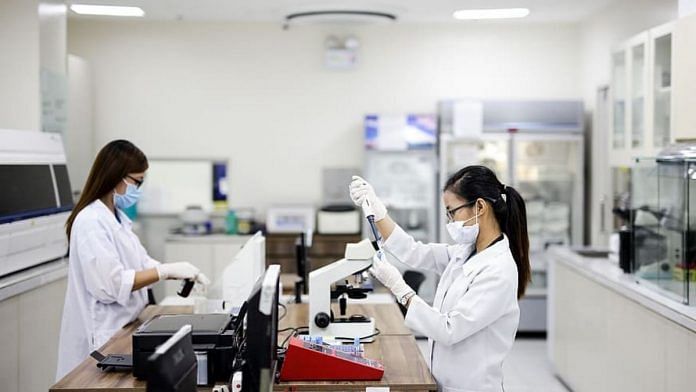Women remain a significant minority in the scientific fields driving the digital revolution, amid a general skills shortage that’s holding back progress.
The UNESCO Science Report 2021 found that women are still under-represented in fields such as computing, digital information technology, engineering, mathematics and physics.
The report authors advise that strenuous efforts need to be made at government, academic and corporate levels to address this gender imbalance. The challenge is to attract and then retain women in these subject areas and maintain momentum in the Fourth Industrial Revolution.
By the numbers: Women in STEM
Women made up a third (33%) of researchers in 2018 and have achieved parity when it comes to numbers in life sciences in many countries, the report says.
But women make up just 28% of graduates in engineering and 40% of those in computer sciences – skills vital for the jobs of the future, it added.
Female workers also account for just 22% of people working in artificial intelligence (AI) worldwide, although there are regional differences, according to UNESCO.
Countries such as Singapore, Italy and South Africa were leading the way with each having women make up about 28% of professionals with AI skills, compared to just 14% in Brazil, 15% in Mexico, and 16% in both Germany and Poland.
Gender gap at top tech companies
Women are also under-represented at the top of multinational tech companies, despite efforts to close the gender gap in technical and leadership roles, the UNESCO report warns.
Facebook leads the way with women accounting for 23% of technical roles, and 33% of leadership positions.
Apple has been implementing measures to hire more women and under-represented minorities since 2014, but women still only make up 23% of technical roles and 29% of leadership ones.
Meanwhile, Amazon has been working to correct the gender imbalance since 2018, when it realised that its AI system was not ranking women candidates for software developer and other technical roles.
The online retail giant has since committed $50m to supporting science, technology, engineering and mathematics (STEM) programmes for under-represented communities, but still only 27% of its managers around the world are women.
Also read: These are the 11 Indian women scientists the new STEM chairs are named after
Women less likely to access funding
Women in science and tech are also less likely than men to access funding.
Start-ups led by women received just 2.3% of venture capital in 2020, according to a report from Harvard Business Review, citing data from Crunchbase.
Women in academia were also found to receive less grant funding despite being twice as productive.
And though women account for four in 10 academics globally, they often face an impenetrable glass ceiling, says UNESCO.
In 2015, across 69 national science academies, women made up 10% or less of members in 30 countries.
They were also considerably better represented in the social sciences, humanities and the arts (16%), biological sciences (15%) and medical and health sciences (14%), than in mathematical (6%) and engineering (5%) sciences.
Women in science and engineering were also disproportionately affected by COVID-19, with female scientists reporting at least a 5% decline in research time compared to their male counterparts.
Women ‘must not be left behind’ with jobs for the future
In a digitally driven future, advances in technologies such as AI will blur the boundaries between male and female that form the basis of the gender gap, says UNESCO.
COVID-19 prompted changes in work-life balance and these need to be translated into policies that ensure women do not spend a disproportionate amount of time as unpaid carers, educators and home-makers, it adds.
Women must be given equal access to education and information that will enable them to compete equally with men for the jobs of the future, says UNESCO.
Also read: Lack of support, not ‘likeable’ — why India doesn’t have more women in science
Global gender gap increased by a generation
UNESCO’s findings echo those of the World Economic Forum’s Global Gender Gap Report 2021, which found that the time it will take to close the worldwide gender gap has increased by a generation from 99.5 to 135.6 years.
Gender parity has only been achieved in two of eight tracked “jobs of tomorrow” clusters – people & culture, and content production, UNESCO says.
Gender gaps are more likely in sectors that require disruptive technical skills such as cloud computing (where women make up 14% of workforce); engineering (20%) and data and AI (32%), it adds.
Natalie Marchant Writer, Formative Content
This article was first published in World Economic Forum. Read the original article here.






